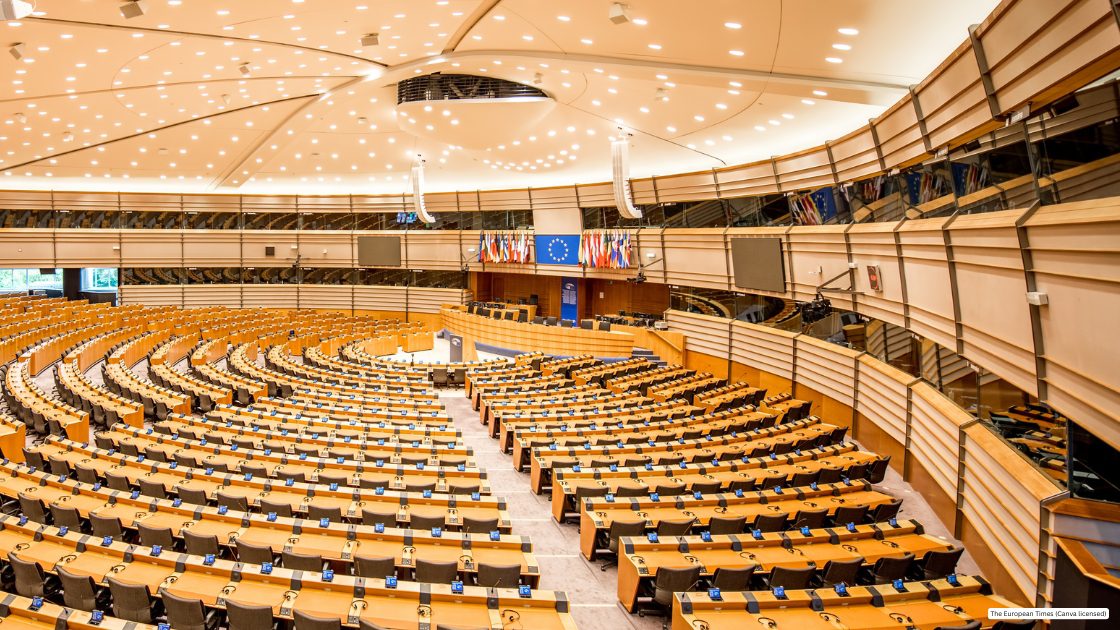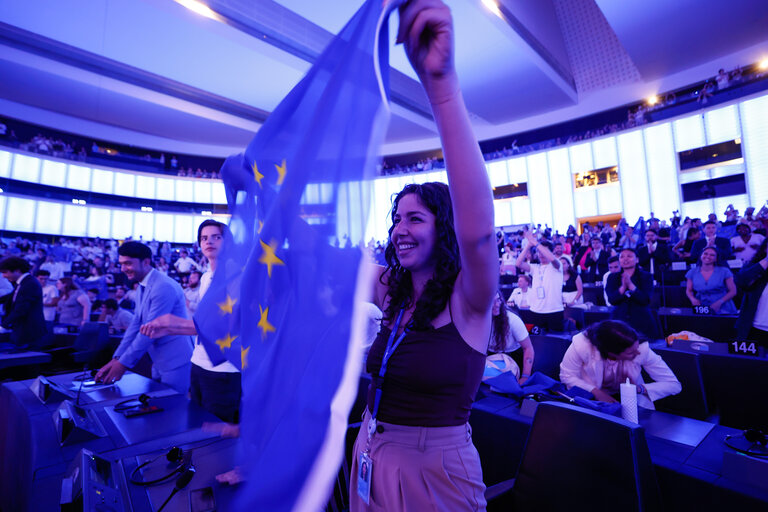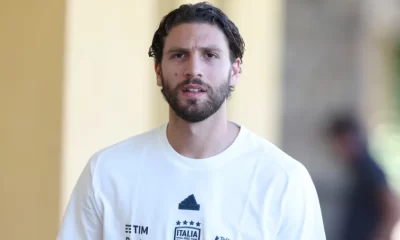Politics
Shepherds and believers under the yoke of communism (1)

By Archpriest George Mitrofanov
The history of the Russian Orthodox Church of the 20th century is, first of all, the history of persecution of the Russian Orthodox Church, which had experienced mainly in the conditions of the Bolshevik regime that established in Russia. And, of course, in these conditions, the Russian Orthodox Church, its Holy Priest, could not have developed a very definite attitude to the regime and to the ideology that these persecution made inevitable. During 1917-45 Both in our country and beyond, in this sense there was a certain, which had an ideological and even in a sense, organizational continuity of the anti -communist movement.
It was during the civil war that the anti -communist movement in Russia declared itself quite definitely, as the Russian Orthodox Church has stated quite definitely about its attitude to the situation in the country after the seizure of power by the Bolsheviks. Message of St. Patriarch Tikhon of January 19, 1918 was quite traditional for this kind of messages of Russian church hierarchs, which they announced during periods of various kinds of civilian unrest and feuds. In this message, the Orthodox, by birth and baptism, the participants of the Troubles, who were persecuting the church or murder and violence in relation to innocent people, were subjected to excommunication from the church. At the same time, the Bolsheviks were not so much of the Orthodox origin as the numerous representatives of the baptized Russian people, who had already shown in the Bolshevik anti -church policy.
“Complete the madmen! Stop your bloody reprisals!” Wrote St. Patriarch Tikhon. “After all, that you do, not only a cruel business, is truly Satanic, for which you are subject to Geena’s fire in life, the afterlife and the terrible curse of the offspring in the life of a real, earthly one, given to us from God, forbid you to proceed with the secrets of Christ, We are anathematous, if only you wear Christian names, and although by your birth belong to the Orthodox Church and all of you, the faithful children of the Orthodox Church of Christ, not to enter into any communication with such a monster. ” It should be emphasized that on January 22, 1918 it was a message of St. Patriarch Tikhon was accepted by the local cathedral as a cathedral document, that is, already in January 1918. The Local Council on behalf of the entire Russian Orthodox Church gave the sharpest of all assessments that the Church could give, the Orthodox Christians who participated in the implementation of the policy of the Bolshevik regime that had just established in Russia. This kind of decision of the cathedral, who, as we know, could be moderate enough in some matters, testified that even then many of its participants and, above all, St. Patriarch Tikhon realized the danger of the change of power in Russia both for the Church and the country as a whole.
The beginning of 1918 marked the beginning of the anti-communist movement in Russia, for which the cathedral anathema of the supporters of the Bolshevik regime was quite rightly perceived as an anathema, addressed to their political, and then already military opponents, as an indication of the Church, capable of giving many Orthodox Christians a faithful spiritual and historical guideline in that difficult situation. The development of the white movement in 1918 in different parts of the country, of course, testified that the resistance to Bolshevism in Russia turned out to be possible, but was not so significant that it could win. Obviously, the anathema of St. Patriarch Tikhon assumed the possibility that the Orthodox Christians who constituted the bulk of the Russian people, who were involved in the Bolsheviks in their criminal policy, will be able to change their minds and recoil under the threat of church excommunication from the support of the Bolshevik regime, depriving him of support in the masses. However, already 1918 he clearly demonstrated that the white movement could not become a mass movement. Nevertheless, on October 25, 1918, after the activity of the Local Council, in essence, was stopped by the Bolsheviks, St. Patriarch Tikhon released another message, not addressed by him to Orthodox Christians, but directly to the Council of People’s Commissars. This message was not only the most politicized, but also the most anti -Bolshevikly formulated message of St. Patriarch Tikhon. It was given one of the most exhaustive both in their historical content and in their spiritual insight of assessments of the Bolshevik regime, all its policy and those formidable prospects that opened before the country as it was preserved.
Several fragments of this message should be reminded:
“” Everyone who took the sword will die. ”This prophecy of the Savior we turn to you, the current vertices of the fate of our Fatherland, calling yourself“ folk ”commissars. For a year you are holding their state power and are about to celebrate the anniversary of the October Revolution; but the rivers spilled blood of our brothers, ruthlessly killed by your call, yells to sky and force us to hen You do not need a bitter word of truth, you need a shameful world with an external enemy, and you, who have decided to finally destroy the inner world, lives under the constant fear of a search, robbery, eviction, arrest, executions, they are grabbing. A simplified, you will execute not only those who have been guilty of anything in front of you, but also those who are not even guilty of anything before you, but are taken only as “hostages”.
They execute bishops, priests, monks and nuns, and no obedients, but simply on the cereal charges of some vague and uncertain counter-revolution. But you are not enough for you that you stained the hands of the Russian people with his fraternal blood; Hiding behind various names – indemnity, requisition and nationalization, you pushed it to the most open and shameless robbery. At your instruction, lands, estates, factories, factories, houses, cattle, rob money, things, furniture, clothes are robbed or taken away. At first, under the name “bourgeois” they robbed wealthy people, then under the name of “fists” they began to rob more wealthy and hardworking peasants, thus multiplying the poor, although you cannot but realize that popular wealth is destroyed with the ruin of a great set of individual citizens and the country itself is ruined. Seducting the dark and ignorant people with the possibility of mild and impunity profit, you fenced off its conscience and drowned out the consciousness of sin in it; But no matter what names the atrocities are covered – murder, violence, robbery will always remain heavy and glaring to the sky about rejection by sins and crimes. ”
In this message, in essence, one of the most important conclusions was formulated for the Orthodox Church understanding all those events that were destined to occur in Russia later. The Bolsheviks not only destroyed the country, its economy, statehood-they destroyed the soul of the people, essentially discarding the religious and worldview values that had formed in it for centuries. The main commandments stopped acting, and what used to be called the commandment “do not steal”, now turned into an authorized right to dishonor “to expropriate expropriators”, “rob the loot”. The commandment “not murdered” was canceled, giving way to the class struggle as the main moral duty of the Russian people. It was about this corruption of the people’s soul, which will continue to last decades, that St. Patriarch Tikhon in the message of October 25, 1918
However, even in this message there was no direct call to the armed resistance of the Bolsheviks. “We know that our denunciations will cause you only anger and indignation and that you will look for only an occasion to accuse us of opposing power; but the higher the“ pillar of the anger ”of your, the most the evidence of the fairness of our accusations will be.” It is easy to guess that the main motivation for the performance of St. Patriarch Tikhon, with this kind of message, was the understanding of him that the further stay in the power of the Bolsheviks would lead Russia not only to a historical, but also to a spiritual catastrophe.
Regarding the assessment of St. Patriarch Tikhon of the White Movement, we can only build all kinds of assumptions. It is impossible to find the words of condemnation of the White movement in his messages. Although the words of warning, albeit not called by their direct name, the White Guards not to be like the Bolsheviks sounded in his July Epistle of 1919. However, the characteristic of Bolshevism in the epistles of St. Patriarch Tikhon was given so definite that the only conclusion from this kind of characteristics for an Orthodox Christian could only be the conclusion about the need to resist the evil of Bolshevism both spiritual and military-political force.
The position of the church hierarchy in the territory freed from the Bolsheviks, if not in content, then in form was somewhat different from the position of the Patriarch, which was expressed in his epistles. In their many sermons and messages, church hierarchs, who were in the territory occupied by the White, unequivocally declared their blessing to the white movement. And it is significant that St. Patriarch Tikhon never disputed the correctness of this kind of statements, although in his message of September 25, 1925 he tried to dissolve all this time by persecution by the Bolsheviks of the Orthodox Church from participating in the military-political confrontation that took place in Russia.
The development of the Civil War showed that the white movement could not become the movement of truly mass: it suffered a military-political defeat. At the same time, it is obvious that the Russian people, without supporting the white movement in their main mass, involuntarily followed the path of spiritual and historical suicide. However, the churches had to deal with such a people, and it was supposed to proceed from the situation that developed in Russia at this time. Of course, until 1923 (or, more correctly, to his arrest in May 1922) St. Patriarch Tikhon occupied a fairly consistent, corresponding to his previous position in relation to the Bolsheviks. He never called for armed resistance to the Bolsheviks, but always gave a fairly clear, sometimes sharp description of the actions of the Bolshevik regime. This is clearly evidenced, in particular, the patriarchal message of February 28, 1922 regarding the seizure of church values.
However, shortly after the arrest, the situation has changed significantly, because, in conclusion St. Patriarch Tikhon was forced to face a completely new reality. The prospect of the Bolshevik regime now presented before him as a long -term prospect – and already the messages of St. Patriarch Tikhon of 1923, in essence, was revealed to the Patriarch to the Patriarch by Russian Orthodox Christians, the new stage of his socio-political position. There was no anti-communist movement in Russia, its last manifestations in the early 1920s, mass peasant uprisings in the Tambov region, in Western Siberia were suppressed by this time. NEP created for some time the main part of the population with the illusion of the possibility of normal life under the Bolsheviks. The participation of the population in church life became less and less significant. At the same time, the positions of the renovationists in the period 1922-1923. With the support of the state, intensified. And St. Patriarch Tikhon faced the prospect of not only arrest and imprisonment, but also death. It was from this time that a new stage in the activity of St. Patriarch Tikhon, who could conditionally be called the superconscious stage of the patriarchal messages.
If we refer to two documents of this period, the application of St. Patriarch Tikhon in the Supreme Court of the RSFSR of June 16, 1923 and his message dated June 28, 1923, we will see texts that are very difficult to consult, and better say, are simply not consistent with those that were quoted above. And this can become understandable if we bring the report of the Chairman of the Anti -religious Commission of the Central Committee E. Yaroslavsky, which listed the specific conditions of the possible liberation of St., for comparison with these texts, which is based on the resolution of the Politburo of the Bolshevik Party. Patriarch Tikhon. “It is urgent to carry out the following decision in the Tikhon case. 1. The investigation in the Tikhon case is not limited to the deadline. 2. Tikhon to inform the preventive measure in relation to him, if a) he makes a special statement that he is repented by the workers, workers and peasant masses and expresses his current loyal attitude towards Soviet power; It recognizes the attraction of it to the court for these crimes) openly and in a sharp form from all forms of counter-revolutionary organizations, especially the White Guard monarchical organizations, both secular and spiritual; In the person of the pope, and the bishop of the Kenterbury and Constantinople Meletia, it will agree with some forms of the church region, for example, a new style. In case of consent to release him and transfer him to the Valaam courtyard, not forbiding him of church activity. ”These were the conditions that Patriarch Tikhon got the opportunity to be released and undertake that at that moment he considered the most important thing for himself – to begin the fight against renovationism.
In his statement to the Supreme Court of the RSFSR St. Patriarch Tikhon wrote: “Being brought up in a monarchical society and being up to the very arrest under the influence of anti-Soviet persons, I was actually hostile to the Soviet regime, and the hostility from a passive state at times turned to active actions, once: the appeal about the Brest world in 1918, anathematizing in the same year of power and, finally, an appeal against the decree of The seizure of church values in 1922. All my anti -Soviet actions were outlined in the indictment of the Supreme Court, recognizing the correctness of the court decision on holding me to the indictment of the Criminal Code for anti -Soviet activities, I repent of these misconduct and I ask the Supreme Court to change my prevention measure. That is, to free me from custody. This statement was attended by almost all points formulated in the report of the E. Yaroslavl Politburo and adopted in the resolution of the Politburo as the conditions of the liberation of Patriarch Tikhon.
In a message dated June 28, 1923, which is considered by some historians a message written directly by Patriarch Tikhon himself and appeared literally the next day after his release, one can find a further fulfillment of the same conditions with the mention of those requirements that were not mentioned in the statement to the Supreme Court of the RSFSR. “Now, for example, it is necessary to ask the Soviet government to defend the offended Russian Orthodox in Poland – Kholmshchina and Grodno region, where the Poles close the Orthodox churches.” This is a criticism of the Roman Catholic Church. “When we learned that at the Karlovak Cathedral in January 1921 the majority made a decision to restore the Romanov dynasty, we leaned to the minority of the inappropriateness of such a decision. And when in March 1922 we became aware of the appeal of the Presidium of the Higher Church Administration abroad to prevent Russian delegates to the Genoese conference, we abolished this management itself, established from the blessing Patriarch of Constantinople. ” This is the criticism of the Karlovak Cathedral, which was not mentioned in a statement to the Supreme Court of the RSFSR. And further: “From his decree” – i.e. The renewal of the Council of 1923 – “You can approve and bless the introduction of a new calendar style and church practice. We still asked the Patriarch of Constantinople …”
Thus, 1923 turned out to be a truly turning point from the point of view that since then from official statements as St. Patriarch Tikhon, and his successors, disappears criticism of the Bolshevik regime even from those positions that were originally designated both by the Holy Patriarch Tikhon himself and the local cathedral of 1917-1918. In the same way, it turns out to be impossible to trace in subsequent messages as St. Patriarch Tikhon, and his successors, the position of the Russian Orthodox Church in relation to the anti -communist movement, which by this time in the USSR had practically ceased or, at least, interrupted to the collectivization period.
(to be contined)
Source in Russian: Mitrofanov George, prot. Shepherds and believers under the yoke of communism. – In: Citizen, No. 5, 2003, p. 63-69.
Politics
New plan will help EU countries tackle cyber-attacks better


© FRVS+MPCP 2022. The European Times® News is registered as an EU Trademark. All rights reserved. The European Times® and the logo of The European Times® are EU trademarks registered by FRVS+MPCP.
Members/Partners of

About Us
Popular Category
DISCLAIMER OPINIONS: The opinions of the authors or reproduced in the articles are the ones of those stating them and it is their own responsibility. Should you find any incorrections you can always contact the newsdesk to seek a correction or right of replay.
DISCLAIMER TRANSLATIONS: All articles in this site are published in English. The translated versions are done through an automated process known as neural translations. If in doubt, always refer to the original article. Thank you for understanding.
DISCLAIMER PHOTOS: We mostly used photos images that are readily available online, from free sources, or from the people promoting the news. If by any chance it happens that we have used one of your copyrighted photos, please do not hesitate to contact us and we will take it down without question. We do not make profits as this is a not for profit project to give voice to the voiceless while giving them a platform to be informed also of general news, and it is completely free.
Editor Picks
Politics
EYE2025 (European Youth Event): thousands to celebrate the power of democracy | News

EYE2025 (European Youth Event) will be opened by Parliament Vice-president Sabine Verheyen (EPP, DE) on Friday 13 June at 10:00 in the EYE village. Vice-president Nicolae Ştefănuță (Greens/EFA, RO) will take part in a session dedicated to the next long-term budget, on Saturday at 15:00. The closing session, with Vice-president Pina Picierno (S&D, IT), will take place on Saturday at 16:45.
Over the two days, there will be panel discussions with MEPs and other EU decision-makers, as well as with experts, activists and content creators. Debates between MEPs and the young participants will cover climate justice, skills for the future, the EU’s next long-term budget, and freedom of speech and media, among many other topics.
Commissioner for Intergenerational Fairness, Youth, Culture and Sport Glenn Micallef will lead a Youth Policy Dialogue on Friday at 11:00, and take part in a panel discussion on young people’s mental health that afternoon. Executive Vice-President of the Commission, Henna Virkkunen will join in a conversation on how technology can strengthen democracy, on Friday at 15:00.
Other guest speakers are democracy activist Daria Navalnya, the Kayapo Amazonian tribal leader Chief Tau Metuktire and the Mayor of Strasbourg Jeanne Barseghian.
The programme also includes workshops on a wide range of issues that concern young people, from disinformation to housing and migration. Quizzes, tours, artistic performances, storytelling workshops and concerts are other options among more than 450 activities organised for the sixth edition of EYE.
All sessions in the hemicycle will be streamed live on the EYE2025 Facebook page and via Parliament’s Multimedia Centre. More details about the schedule, speakers and activities are available on the European Youth Event website.
Press briefing
On Friday 13 June at 16:30, there will be a press briefing with Vice-president Verheyen on media freedom in the EU, in the Daphne Caruana Galizia press conference room. You can follow it live here.
Source link
Politics
Galician healthcare system receives nearly €510 million in EU support for its modernisation

The European Commission supports the development of the new A Coruña university hospital complex (CHUAC) in the city of A Coruña, located in the Spanish region of Galicia. The grant of nearly €60 million awarded under the Public Sector Loan Facility (PSLF), as part of the Just Transition Mechanism (JTM), complements a loan of €450 million provided by the European Investment Bank (EIB), and Xunta de Galicia’s own resources, bringing the total investment to €600 million.
This social infrastructure project of regional interest aims to expand and modernise the existing hospital complex in A Coruña. It is one of Xunta de Galicia’s major actions to strengthen its public healthcare system. The new hospital complex will include state-of-the-art infrastructure and facilities to provide comprehensive and high-quality healthcare and medical services for patients.
The resulting modern and sustainable healthcare infrastructure will improve the provision of health services and the quality of life of the citizens of Galicia, which in turn will enhance regional convergence with a significant impact on the local economy and employment.
Thanks to this project, around 564 000 people are expected to benefit from more efficient, accessible and quality health services in A Coruña and the surrounding areas. The project is also expected to create an estimated 6 140 direct and indirect jobs related to health infrastructure, representing approximately 1.3% of the employed population in A Coruña. With its energy efficiency measures, bioclimatic architecture, as well as sustainable and smart resources management, the project can substantially contribute to climate change mitigation.
This investment therefore plays a crucial role in mitigating the long-term socioeconomic consequences of the coal-fired plants closures in the region, while promoting a sustainable and an inclusive recovery for Galicia in the context of the region’s ageing demographic and green transitions.
Emma Toledano Laredo, Director at the European Commission (DG REGIO), said:
The European Commission, together with CINEA and the EIB, is very proud to bring the new A Coruña university hospital complex to life thanks to the Public Sector Loan Facility. This green, innovative and people-first project will enhance the provision of healthcare to Galicians, while bringing jobs to the region. This is yet another example of how a just and green transition can bring improvement in all sectors of a regional economy and its people.
Paloma Aba Garrote, Director of CINEA, added:
The new A Coruña university hospital complex is an excellent example of how the Public Sector Loan Facility can support European regions in their transition towards climate neutrality and improve people’s lives. Together with our partners, we are proud to invest in a sustainable and modern healthcare infrastructure, which will provide high-quality and accessible services for Galicians while fostering social cohesion, regional convergence and sustainability.
A spokesperson for the Xunta de Galicia regional government stated:
This project aiming to modernise and expand the A Coruña university hospital complex is a fundamental investment to develop the Galician healthcare infrastructure. Galicia is the first Spanish region to receive support from the Public Sector Loan Facility. Moreover, the new CHUAC project has been awarded the biggest PSLF grant so far, amounting to €59.3 million.
About PSLF
The Public Sector Loan Facility (PSLF) is the third pillar of the Just Transition Mechanism (JTM) – a key tool of the European Green Deal Investment Plan to make sure that no one and no region is left behind in the transition to a climate-neutral economy.
The PSLF combines loans from the European Investment Bank (up to around €6-8 billion) with grants from the European Commission (up to €1.3 billion). The combined support is designed to mobilise additional investments for public sector entities in the regions most affected by the green transition as identified in the Territorial Just Transition Plans, to meet their development needs as they move towards a climate-neutral economy. Each Member State creates these plans to identify the challenges faced by just transition regions, along with their development needs and targets for 2030.
The combination of the European Investment Bank loan and the EU grant will help fund projects that do not generate enough revenues to cover their costs.
PSLF is managed by DG REGIO and implemented by CINEA.
About DG REGIO
The Directorate-General for Regional and Urban Policy (DG REGIO) is the department of the European Commission responsible for EU policies on regions and cities. It develops and carries out the Commission’s policies on regional and urban policy. It assists the economic and social development of the developed and less developed regions across the European Union.
About CINEA
The European Climate, Infrastructure and Environment Executive Agency (CINEA) is an Executive Agency established by the European Commission to implement parts of EU funding programmes for transport, energy, climate action, environment and maritime fisheries and aquaculture. CINEA aims to assist its beneficiaries, establish strong partnerships, deliver high-quality programme and project management, foster effective knowledge sharing and create synergies between programmes – to support a sustainable, connected, and decarbonised Europe.
About the EIB
The European Investment Bank (EIB), whose shareholders are the 27 Member States of the European Union, is the EU’s long-term financing institution. The EIB provides loans to the public and private sectors to support high-quality investments contributing to the achievement of the EU headline targets.
Visit the PSLF webpage on CINEA website to find out more about the Facility and the projects it funds.
-
EU & the World5 days ago
Aurora Borealis Forecast: Where & When to See the Northern Lights Tonight
-

 Sports6 days ago
Sports6 days agoChampions League Final 2024-2025: PSG-Inter, official lineups
-

 EU & the World6 days ago
EU & the World6 days agoRihanna’s Parents: About Her Late Dad Ronald Fenty & Mom Monica Braithwaite
-

 EU & the World6 days ago
EU & the World6 days agoLoretta Swit’s Net Worth: How Much Money the ‘M*A*S*H’ Alum Had
-

 Sports5 days ago
Sports5 days agoOfficial: Damien Comolli new general manager of Juventus.
-

 Sports6 days ago
Sports6 days ago“Pecco Bagnaia is a'shadow”: the'former driver celebrates Marc Marquez
-

 EU & the World6 days ago
EU & the World6 days agoTaylor Swift’s Net Worth: How Much Money She Has in 2025
-

 Sports4 days ago
Sports4 days agoManuel Locatelli forced to leave Italy's training camp








